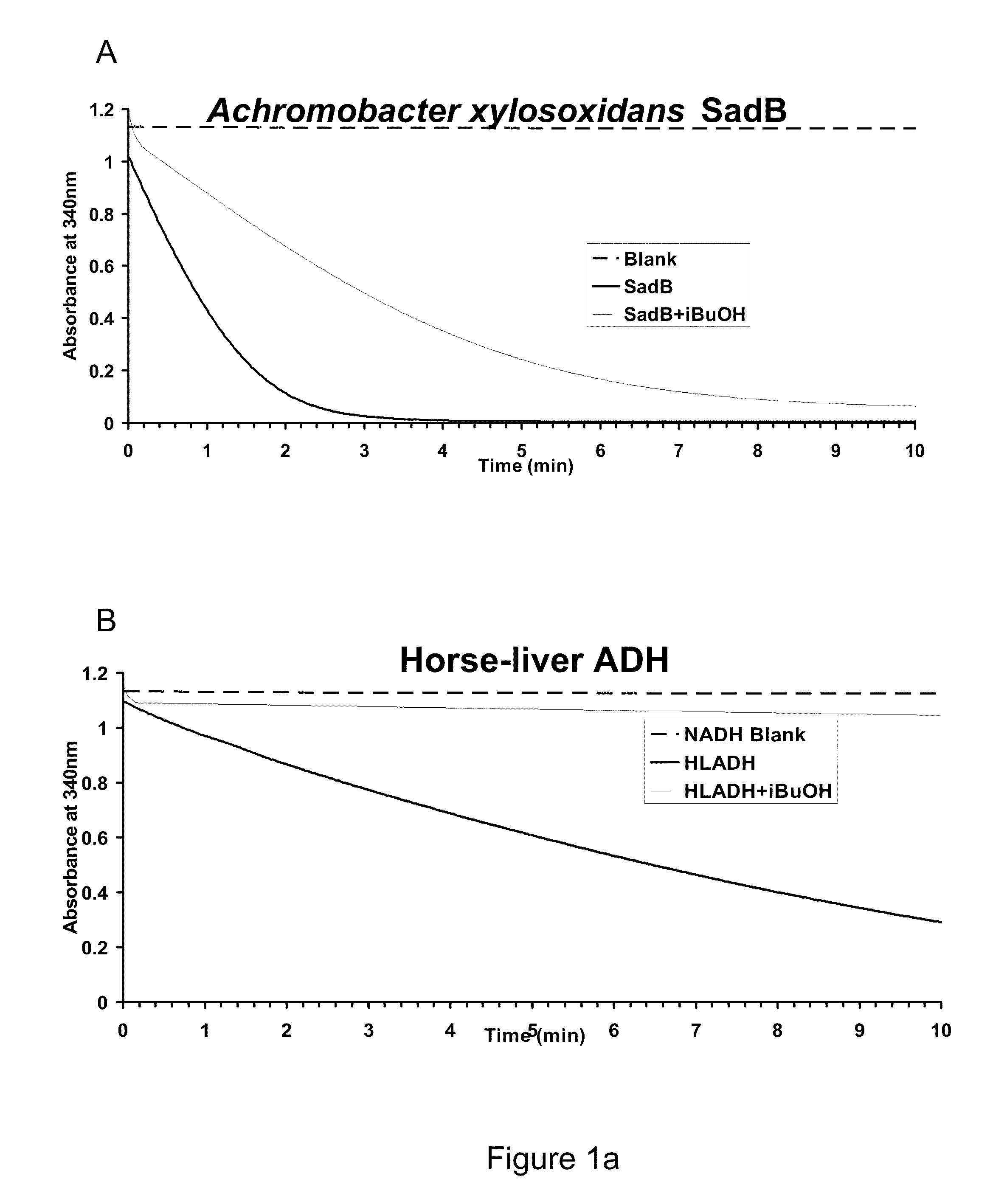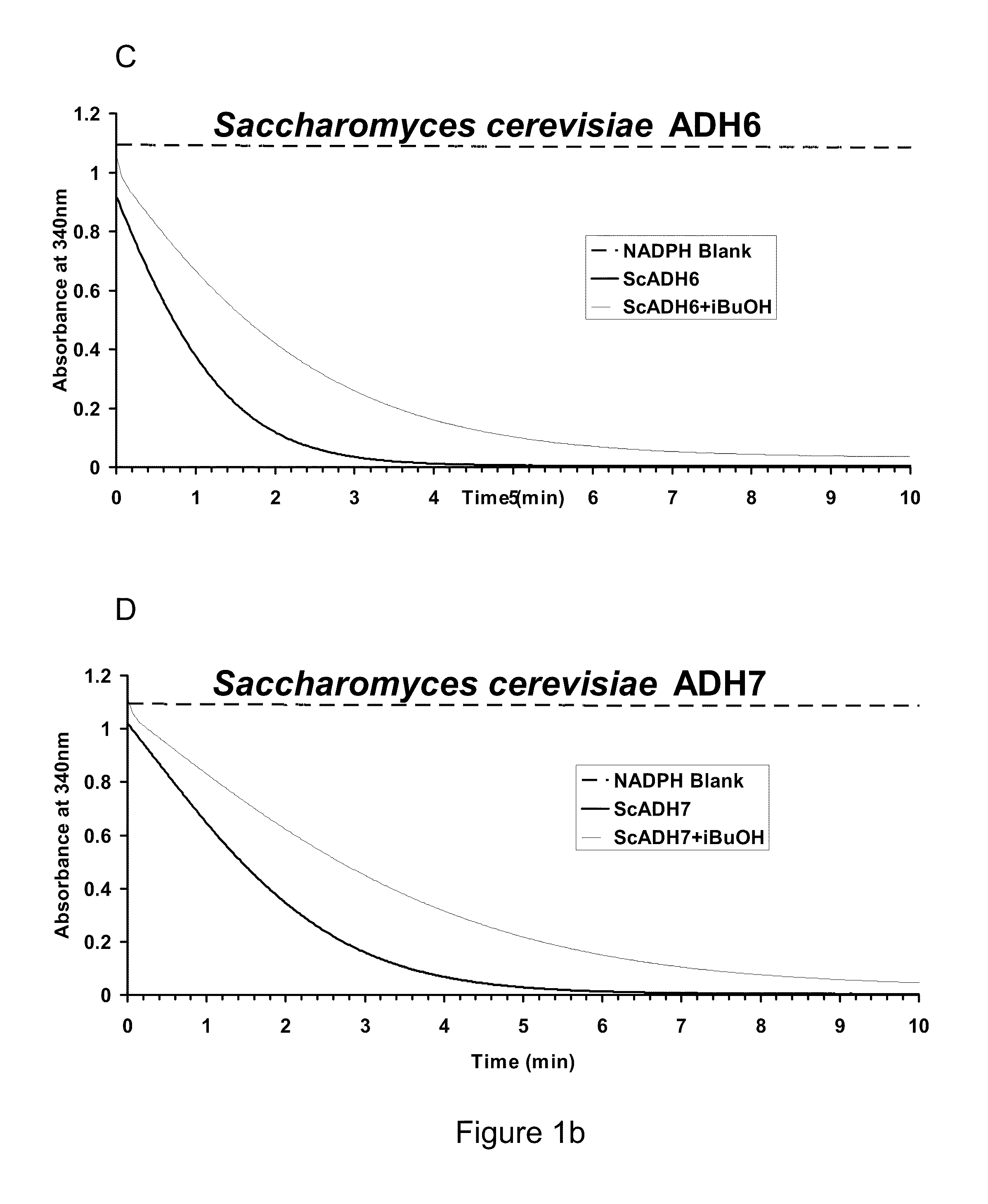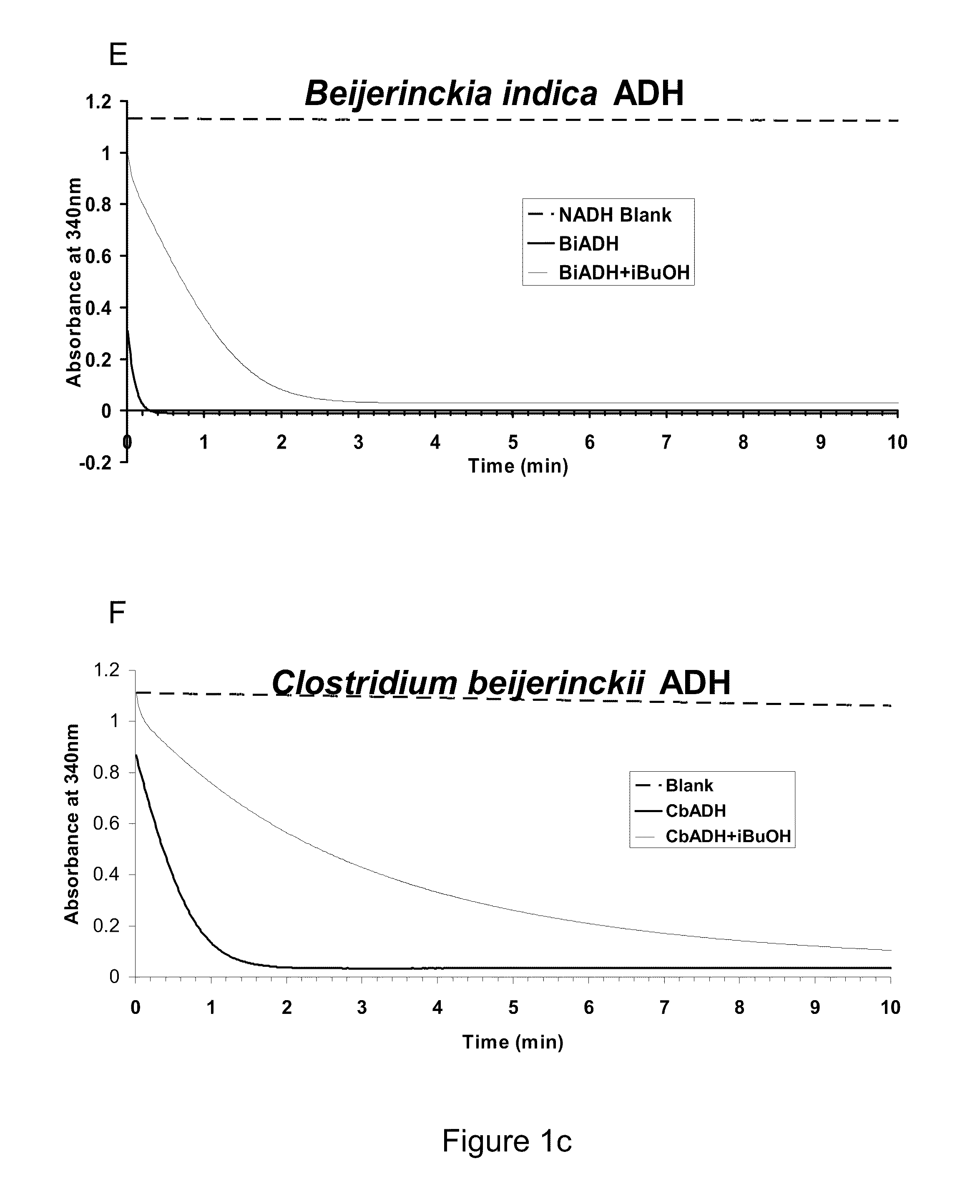Alcohol dehydrogenases (ADH) useful for fermentive production of lower alkyl alcohols
a technology of alcohol dehydrogenase and lower alkyl alcohol, which is applied in the field of alcohol production and industrial microbiology, can solve the problems of low yield of fusel oil and/or its components, high cost, and inability to meet the needs of industrial production,
- Summary
- Abstract
- Description
- Claims
- Application Information
AI Technical Summary
Benefits of technology
Problems solved by technology
Method used
Image
Examples
example 1
Selection of Potential Isobutyraldehyde Dehydrogenases for Screening
[0248]This example describes the basis for the selection of several ADH candidate enzymes for identifying efficient isobutyraldehyde dehydrogenases. Clostridium acetobutylicum Butanol Dehydrogenase A and B (BdhA and BdhB) were chosen for analysis based on the literature evidence. Achromobacter xylosoxidans was selected by enriching an environmental sludge sample on medium containing 1-butanol. The organism was then cultured and used to purify protein fraction that contained butanol dehydrogenase activity, subsequent to which the gene corresponding to the Secondary Alcohol Dehydrogenase B (SadB) was cloned as described in U.S. Patent Application Publication No. US 2009-0269823 A1. The horse-liver ADH enzyme (HLADH) is commercially available and was reported to have isobutanol oxidation activity by Green et al. in J. Biol. Chem. 268:7792 (1993).
[0249]Desirable properties of an ideal isobutyraldehyde dehydrogenase cand...
example 2
Cloning, Protein Expression and Purification, and Screening for a Suitable Isobutyraldehyde Dehydrogenase
[0251]This example describes preparation of ADH-gene constructs for over-expression / purification and measurement of enzyme activities using a time-course assay. Horse-liver ADH (HLADH; A-6128) was purchased from Sigma. Achromobacter xylosoxidans SadB (SadB), Saccharomyces cerevisiae ADH6 (ScADH6) and ADH7 (ScADH7), Entamoeba histolytica ADH1 (EhADH1), Bos Taurus Aldehyde Reductase (BtARD), Beijerinckia indica subsp. Indica ATCC 9039 (BiADH), Clostridium beijerinckii ADH (CbADH), Rana perezi ADH8 (RpADH8), Rattus norvegicus ADH1 (RnADH1), Thermus sp. ATN1 ADH (TADH), Phenylobacterium zucineum HLK1 ADH (PzADH), Methylocella silvestris BL2 ADH (MsADH), Acinetobacter baumannii AYE ADH (AbADH), Geobacillus sp. WCH70 ADH (GbADH), Vanderwaltozyma polyspora DSM 70294 ADH (VpADH), Mucor circinelloides ADH (McADH), and Rhodococcus erythropolis PR4ADH (ReADH) were the candidates for which s...
example 3
Identification of Beijerinckia indica ADH with a High kcat and a Low KM for Isobutyraldehyde
[0265]Kinetic constants of the ADH enzymes were calculated and compared to identify those candidate ADH enzymes with the most desirable properties for the conversion of isobutyraldehyde to isobutanol in the last step of the engineered pathway for isobutanol production. The assays for determining the kinetic constants were carried out using initial rates from the assays described above. Decreases in NADH can be correlated with aldehyde being consumed (Biochemistry by Voet and Voet, John Wiley & Sons, Inc.) However, the amount of a given enzyme used in the reaction was in the range of 0.1 to 5 μg. The concentration of a given enzyme was such that it was conducive for the measurement of initial velocities over a 1-min time course. For each enzyme, Michaelis-Menten plots were generated with a broad range of substrate concentrations. Rough estimates of KM were obtained, based on which the assays w...
PUM
| Property | Measurement | Unit |
|---|---|---|
| concentration | aaaaa | aaaaa |
| concentration | aaaaa | aaaaa |
| concentration | aaaaa | aaaaa |
Abstract
Description
Claims
Application Information
 Login to View More
Login to View More - R&D
- Intellectual Property
- Life Sciences
- Materials
- Tech Scout
- Unparalleled Data Quality
- Higher Quality Content
- 60% Fewer Hallucinations
Browse by: Latest US Patents, China's latest patents, Technical Efficacy Thesaurus, Application Domain, Technology Topic, Popular Technical Reports.
© 2025 PatSnap. All rights reserved.Legal|Privacy policy|Modern Slavery Act Transparency Statement|Sitemap|About US| Contact US: help@patsnap.com



